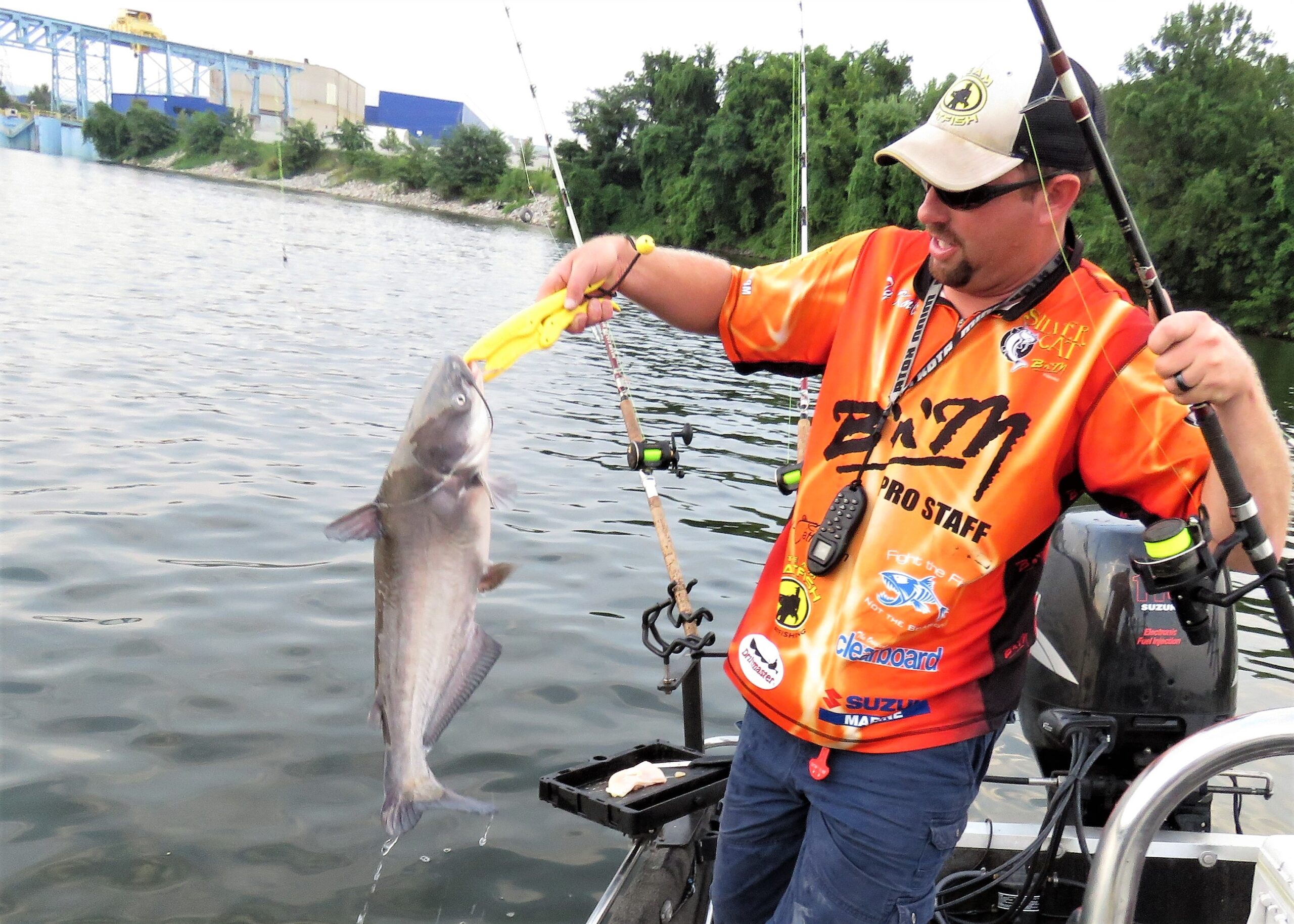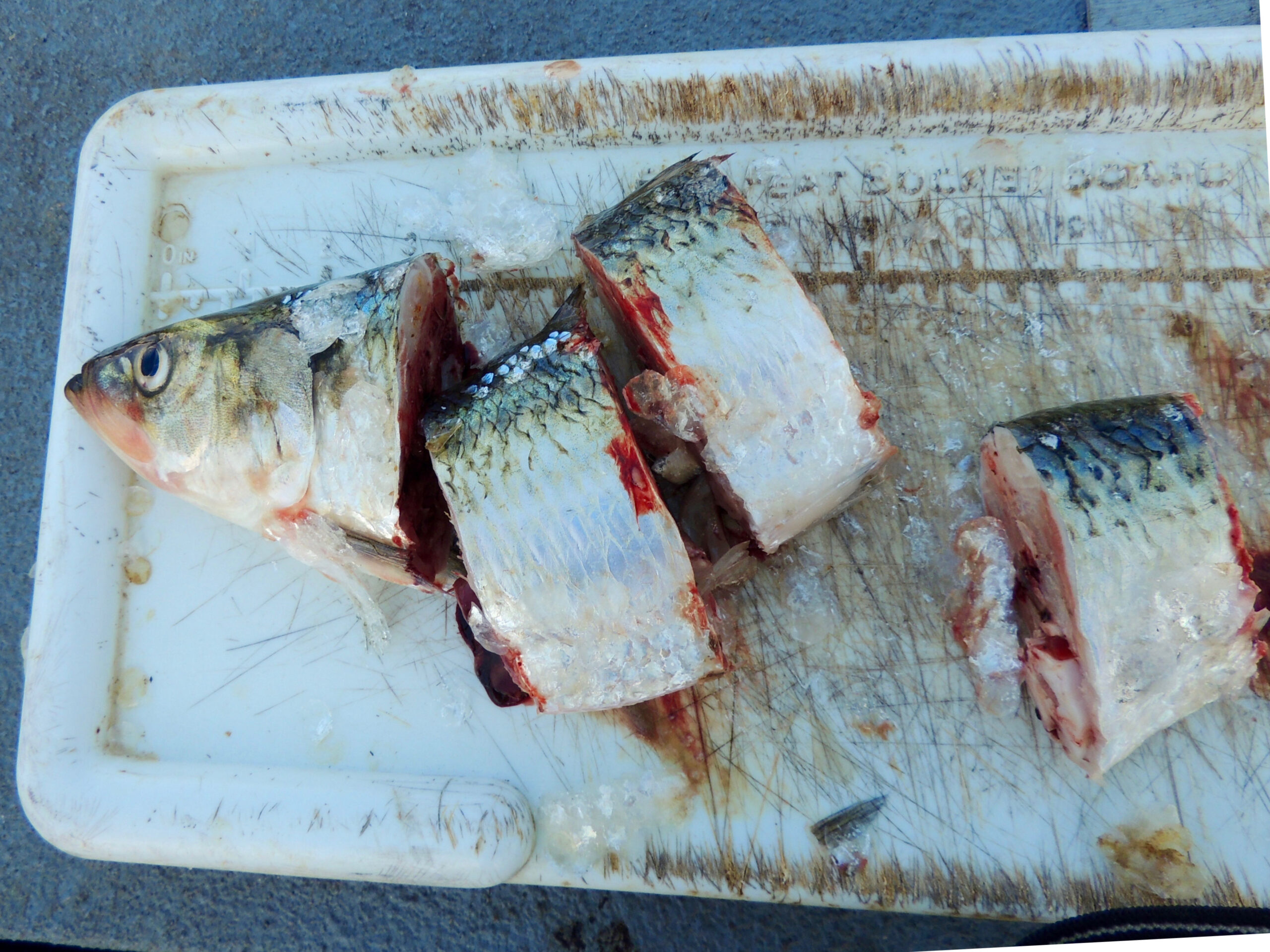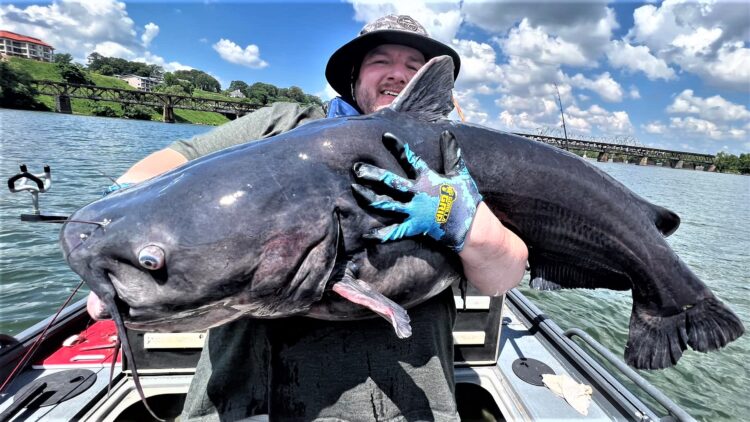Light Line Drifting for Catfish
by Ron Presley
Free-line drifting with 10-pound mono proves to be challenging and productive catfishing.
My first light tackle blue came on a piece of fresh-cut chicken breast. I was fishing with Captain Ty Konkle on the Tennessee River near Chattanooga when I got hooked. We caught several nice blues on light spinning gear that day, but I was hooked for life on the fun of catching the whiskered critters on light gear. It’s fun and productive!

Ty is not guiding anymore, but plenty of his compadres with Scenic City Fishing Charters, Inc. use the same methods with the same results. It is truly a different experience to catch any size blue on light tackle but when you hook into a trophy it’s special.
Konkle referred to the method we were using as free-line drifting. I learned that Konkle spools with 10-pound mono and uses an inline swivel to add a 20-pound shock leader and a 5/0 circle hook. That’s the rig. Konkle’s favorite bait for this method is chicken breast cut into small chunks. He changes chunks occasionally to help keep them fresh.
The technique is to cast the rig out and let the bait drift down the river in the current. The boat also floats along as the anglers fish. A lot of ground is covered as the chicken chunks float freely downstream above the bottom.
The average catfish caught using this technique ranges in the 5 to 8-pound class, but occasionally a trophy cat comes along and the fight, and the fun, is on. At that point, it is up to the angler to use the equipment and his own skills to boat the fish.
Capt. Mike Mitchell recently posted a 61-pound blue on social media that his guest caught on light tackle. He described his experience as similar to that used by Capt. Richard Simms and the Scenic City bunch but his bait is more likely to be skipjack and he upsizes his leader and hook.
“It’s a fun technique,” noted Mitchell “Just cast out without weight, similar to what Richard Simms does with chicken in Chattanooga, and enjoy the fight.”

“I typically use this method within a few miles of the dams,” explained Mitchell. “I mainly fish on Wheeler and Wilson with my best free line drifting success coming in water that ranges from 8 to 15 feet deep around boulders. The targets are pre-spawn blues that tend to hang around close to spawning areas.”
Mitchell’s rig is very simple too. His spinning rods are spooled with 10-pound test Slime Line Super Stretch Mono. He adds a swivel, about 2 feet of 80-pound test leader, and an 8/0 Boss Kat circle hook.
When it comes to landing the bigger fish on light tackle there are a few things to keep in mind according to Mitchell. A correctly set drag is always important but the issue of fish control has to be considered when setting the drag. Also, the angler should never let the line touch the boat when fighting the fish.
“I coach my anglers quite a bit,” explained Mitchell. “They have to keep the fish off the boat. It’s crucial because if a big blue runs under the boat and touches it the result is usually a break off. If it looks like a fish might spool us, I chase them with the trolling motor and then try to position the boat. I turn the boat to give the angler the best possible angle to land the fish.”
It’s a good idea to use a fair amount of drag. Don’t set it super loose because you need to have some control over the fish or your prey will most likely find something to get into. The heavy leader will add abrasion resistance to combat the fish’s sharp mouth and the rough rocks they are found around.
Unlike the chicken drifting described above, Mitchell’s freeline method does not require current although Mitchell does use it in current situations with minor adjustments.

“I generally fish mostly dead water,” explained Mitchell. “I instruct my guests to work the baits some. The key is a slow falling bait so I don’t want any weight and I don’t want a heavy bait. Start with a short cast and let the bait sink then pick up about 2 feet or so and let fall again. Adding a little movement is kinda’ like working a plastic worm for bass.”
“I don’t use it as much, but I have had luck free drifting in the current,” concluded Mitchell. “In that case, I generally use the trolling motor to slow the boat some and treat the bait like I do while bumping. By moving it slightly you keep the bait floating along with the boat.”
Note: Capt. Mitchell can be reached through his Facebook page. He is the owner/operator at Southern Cats Guide Service. He recently had a client catch a 61-pound blue on 10-pound Slime Line Super Stretch Mono. The fish and guest are pictured in the lead photo.



